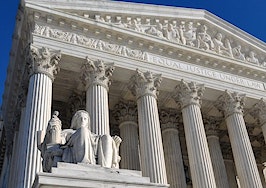The U.S. Supreme Court ruled Monday that the structure of the Consumer Financial Protection Bureau (CFPB) is unconstitutional. The court, however, did not rule that the entire agency is unconstitutional, likely protecting the independent agency that protects consumers from predatory lending practices, including in the mortgage space.
“The CFPB’s single-director configuration is also incompatible with the structure of the Constitution, which — with the sole exception of the Presidency — scrupulously avoids concentrating power in the hands of any single individual,” Chief Justice John Roberts wrote, in the ruling opinion.
The independent regulatory agency was created in the wake of the 2008 Great Recession, as part of the Dodd-Frank Wall Street Reform and Consumer Protection Act, passed by Congress in 2010.
The agency oversees consumer debt and lending products to ensure they are safe and transparent. CFPB regularly updates disclosure rules surrounding mortgages, for example. It can also enforce these lending practices, with the power to fine and punish bad actors.
So far, the agency has collected more than $11 billion in relief for more than 25 million consumers, including the landmark $1 billion punishment levied against Well Fargo for fees related to locking in mortgages and other lending violations.
Independent agencies are typically overseen by a board or commission, according to the ruling. CFPB, however, is led by a single director, appointed by the president to a five-year term, during which the president can only remove the director for “inefficiency, neglect of duty, or malfeasance in office,” according to the ruling.
The court’s ruling now allows the president to remove the director at will.
“The CFPB’s structure has no foothold in history or tradition,” Roberts wrote. “Congress has provided removal protection to principal officers who alone wield power in only four isolated instances: the Comptroller of the Currency (for a one-year period during the Civil War); the Office of Special Counsel; the Administrator of the Social Security Administration; and the Director of the Federal Housing Finance Agency.”
“Aside from the one-year blip for the Comptroller of the Currency, these examples are modern and contested; and they do not involve regulatory or enforcement authority comparable to that exercised by the CFPB.”













